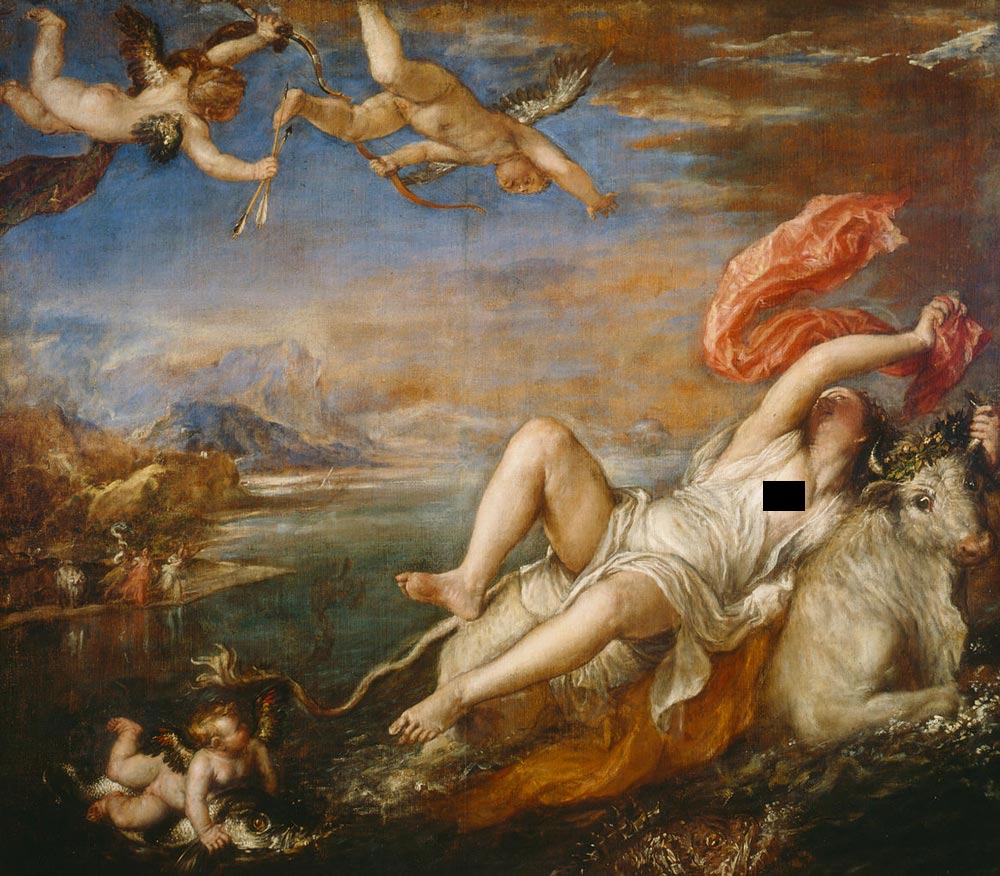| Rape of Europa | |
|---|---|
 |
|
| Artist | Titian |
| Year | 1560-1562 |
| Medium | Oil on canvas |
| Location | Isabella Stewart Gardner Museum in Boston, MA |
| Dimensions | 70.1 × 80.7 in |
| 178 × 205 cm | |
| Famous Paintings by Titian | |
| Rape of Europa | |
| Sacred and Profane Love | |
| Pastoral Concert | |
| The Assumption of the Virgin | |
| Christ Carrying the Cross | |
| The Flaying of Marsyas | |
| Allegory of Prudence | |
| The Worship of Venus | |
| Self-Portrait | |
| View Complete Works |
Tiziano Vecillio was a high Italian renaissance painter born to a family of moderate means in 1488 and living in the Venice mountains. He received his tutelage through the workshop of Giovanni Bellini; the most prominent artist in 15th century Venice.
The Rape of Europa was painted by Tiziano Vecillio sometime during the period of 1559 to 1562 for the King of Spain Phillip II. It was certainly one of the most jovial of his poetic works. The painting depicts a completely surprised Europa arms and legs flailing as she is carried away on Jupiter’s back as he is disguised as an ornamented white bull while a little chubby and nude boy riding the back of a dolphin appears to be mocking her. Meanwhile in the sky are cupids follow the happy scene. The clear blue sky combined with a stormy sky is the Venetian’s subtle hint of conflict taking place between the two lovers. Europa is portrayed as demure and resistant, weak with desire and frightened beneath a contrasting sky of opposites both calm and turbulent. Cupids one below and two above are transfixed as they watch the tension between Europa and Jupiter.
Tiziano, commonly known simply as Titian, used light to accentuate the dramatization and emotions of the painting, superbly depicting the Venetian’s skill in the use of light. Nymphs ambiguous on the far shore helplessly waive as they watch. Europa’s voluptuous and billowing flesh and the white bull’s tail seem to quiver excitedly at the forthcoming sexual contact.
The bull’s eye was painted by Titan to be unavoidably leering and impossible to avoid is the most painted eye of human or animal in Western art. It is spellbinding and dares the viewer not to stare back!
This awe inspiring work of art resides at the Isabella S. Gardner Museum in Boston, Massachusetts.